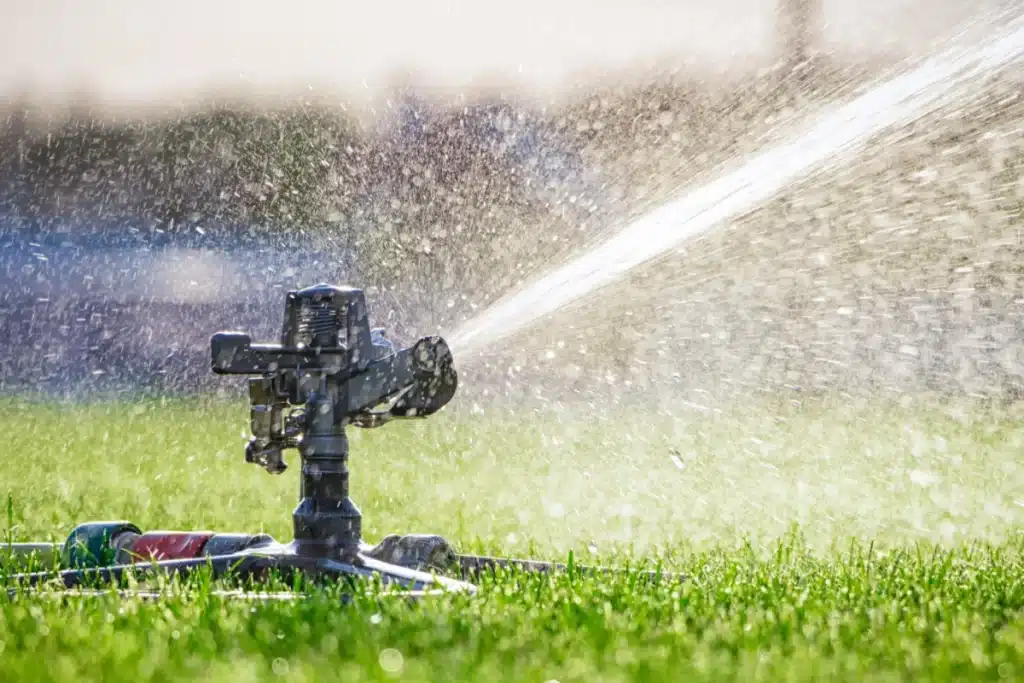Welcome to Greener Lawn Supplies, your ultimate destination for all things related to lawn care in the challenging Australian summer. In this expansive and detailed guide, we’ll go above and beyond to provide you with invaluable insights on maintaining a lush and thriving lawn during the sweltering summer months.
Our mission is to equip you with the knowledge you need to achieve a beautifully manicured lawn, irrespective of the scorching Australian heat. From optimizing your sprinkler system to setting the ideal mowing height, our expert advice and water-saving strategies will leave your lawn not only surviving but flourishing in the hottest season of the year.

When it comes to nurturing your lawn during the Australian summer, the frequency of watering plays a crucial role. Deep watering is a fundamental step toward achieving a vibrant lawn. While warm-season, drought-tolerant grasses like Sir Walter DNA Certified Buffalo, Eureka Premium Kikuyu, Tif Tuf Bermuda, and Sir Grange Zoysia require minimal watering, all lawns need some hydration to stay lush and green.
A common query we receive, especially in Australia’s scorching months, is, “How do I know if I’m watering my lawn adequately?” There’s no one-size-fits-all answer, but several factors should be taken into account:
For efficient lawn watering, we recommend the use of an irrigation system or pulsating sprinklers. These methods ensure an even distribution of water across your lawn, promoting healthier growth. Hand-watering with a hose often results in uneven coverage and is time-consuming. Simplify the process by attaching a sprinkler to your hose, set a timer, and let it do the work for you. If you’re pressed for time or experience frequent rain, a rain gauge can help you determine whether you’re under or overwatering your lawn.
Newly laid lawns require more attention due to developing root systems. It’s best to water your new lawn daily, or even twice a day in scorching temperatures. As your lawn matures, test its establishment by attempting to lift a QWELT (Quick establishing, Water-saving, Easy to handle, Long-lasting, Thick cut Slabs). If it resists, it’s established. Adjust your watering regimen based on the weather, but continue watering daily if temperatures exceed 28 degrees.
Established warm-season lawns typically need minimal watering. In Australia’s cooler months (April to September), they can often rely on natural rainfall. During the warmer months (October to March), you’ll want to water weekly to fortnightly, ensuring a deep soak each time. This encourages the roots to penetrate deeper, enhancing drought tolerance. Set your sprinklers to run for 20-30 minutes in the early morning or after dusk and check the moisture by feeling the soil below the surface.
Yes, it’s possible to overwater your established lawn, especially during Australias cooler months. Monitor soil moisture levels, and if the lawn looks healthy and feels wet, it doesn’t require additional watering.
Cool-season grasses, like tall fescue, ryegrass, and bluegrass, demand more water, especially in hot weather. If you opt for these grass types in Australia’s climate, be prepared for daily watering, making an irrigation system essential.
Maintaining your lawn’s hydration during summer is essential. Using an irrigation system or sprinklers with a flow timer is highly effective for even water distribution.
As the warm months approach, conserving water becomes vital. Here are some tips to reduce water consumption:
By following these tips, you’ll ensure a vibrant and water-efficient lawn in the Australian summer. For additional support and high-quality lawn care products, visit our lawn care shop today.

Receive regular updates about company news, project updates & new products.

Receive regular updates about company news,
project updates & new products.
Website Design By: